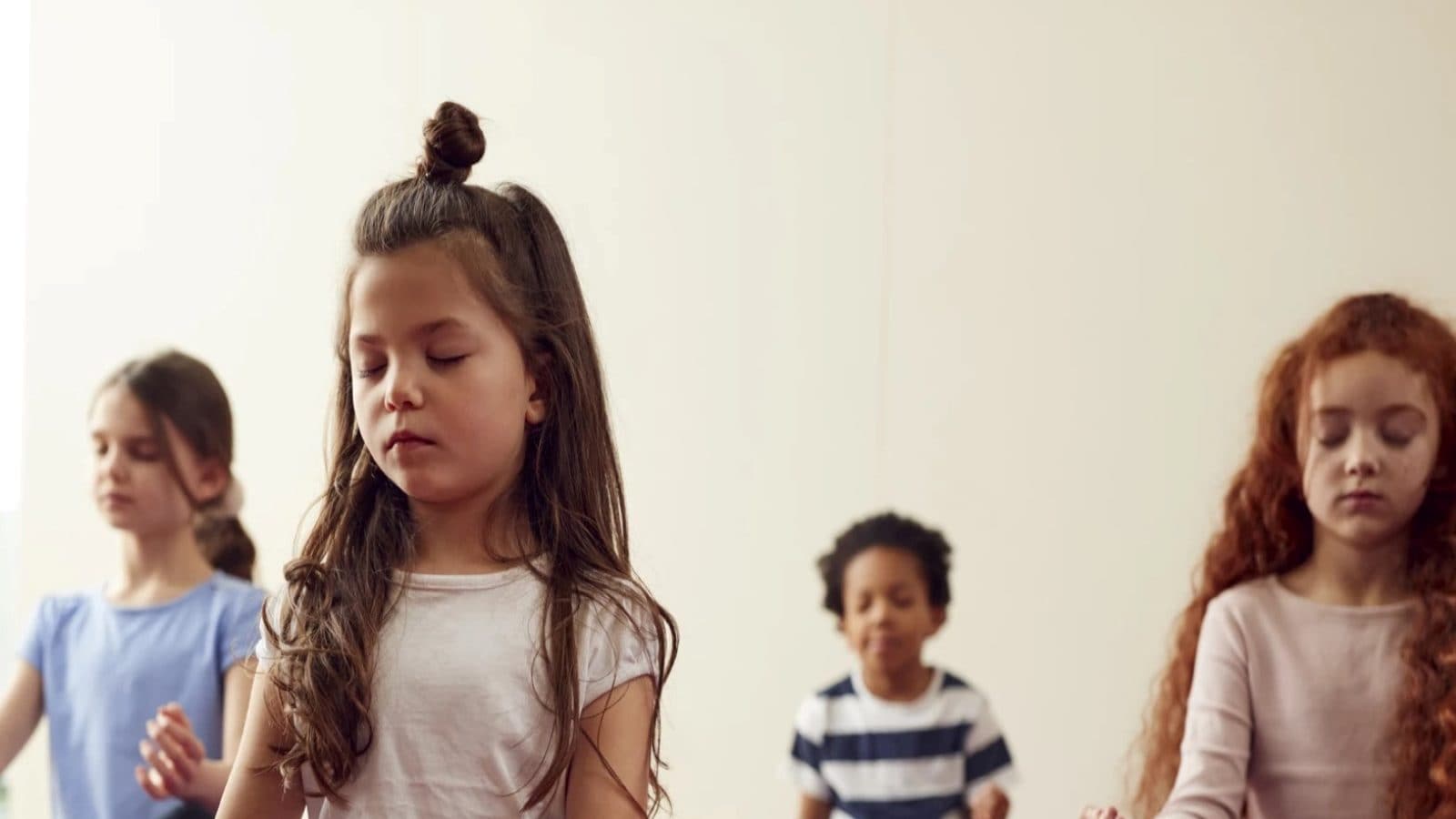7 Yoga Poses for Students to Lessen Exam Stress
Last Updated: February 06, 2023, 15:40 IST

With yoga, the focus, memory, and concentration of students may considerably improve in the classroom, increasing productivity and preparing them for future leadership positions.
Yoga may help children of all ages with their overall wellness and development on all levels. Here are the top 7 yoga poses to help students be more productive, reduce exam stress, and enhance memory, concentration, and focus
The growing pressure to do well has put a lot of unwarranted stress on school-age children, and a dangerously high number of kids endure depression, panic attacks, or suicide thoughts. According to yoga experts, parents can intervene and help their children deal with the stress of all these assignments and tests by using the divine tool of yoga.
Himalayan Siddhaa Akshar, the founder of the World Yoga Organization, the Himalaya Yoga Ashrama, and Akshar Yoga Institutions, emphasized that “Children of all ages can benefit from yoga’s help for their complete wellness and growth on all levels. Students may significantly increase their focus, memory, and concentration in the classroom, which will increase their productivity and prepare them for leadership roles in the future. He recommended the following 7 yoga positions to reduce exam stress:
- Kakasana (Crow pose):
Samasthithi should come first, palms should be flat. Lean forward until your arms are bearing the weight of your body. Lift your feet up as you find your equilibrium. - Padmasana:
Put your left knee in a bent position and above your right thigh. Place your right knee on top of your left leg and repeat the process with your left knee. - Padahasthasana:
Inhale as you bring your hands all the way up while standing. Hold your breath for a moment or two, then simultaneously inhale and lean forward. When performing this pose, your hands should touch your feet, and you should avoid bending your knees. - Paschimottanasana: (Seated Forward Bending)
Take Dandasana first. Empty your stomach of air as you inhale. Exhale and bend your hips forward, putting your upper body on your lower body. Lower your arms and grab your big toes with your fingertips as you exhale. You reach out with your nose and try to touch your knees. as you continue to retain the position. - Sirshasana: (Headstand Pose)
The beginning position is vajrasana. Your elbows have to be flat on the floor. An equilateral triangle should be formed by your elbows and palms. Your palms should be in front of your crown of your head, which should be on the floor. The back of your head should be supported by your palms. Once your back is straight, you should stand on your tiptoes and go toward your head. Lift your right leg up and place it in front of your upper torso first. Use your core strength to balance and bring your left leg up while joining your legs and pointing your toes downward. Hold the position for as long as it is comfortable. - Brain-boosting yoga:
Standing tall and straight with your arms at your sides, place your thumb and index finger on the lobe of your right ear. Holding your left earlobe with your thumb in front, raise your right arm. Your right arm ought to be in front of your left. As you gradually lower yourself to a sitting position, take a deep breath. For two to three seconds, maintain this posture. Then, as you slowly stand back up, exhale. You can repeat the cycle up to 15 times per day; it is now finished. - Ganesh Namaskar:
Keep your arms at your sides and stand tall. Hold your left earlobe with your right arm. Keep your right arm positioned above your left. Hold the right earlobe with your thumb and index finger while using your left arm. Put your thumb in front of you. Breathe out fully and slowly squat to a sitting position. Hold this posture for two to three seconds. Gently exhale as you stand back up. Thus, a cycle is finished. This cycle may be repeated 10 to 15 times daily.
Read all the Latest Lifestyle News here
For all the latest lifestyle News Click Here

